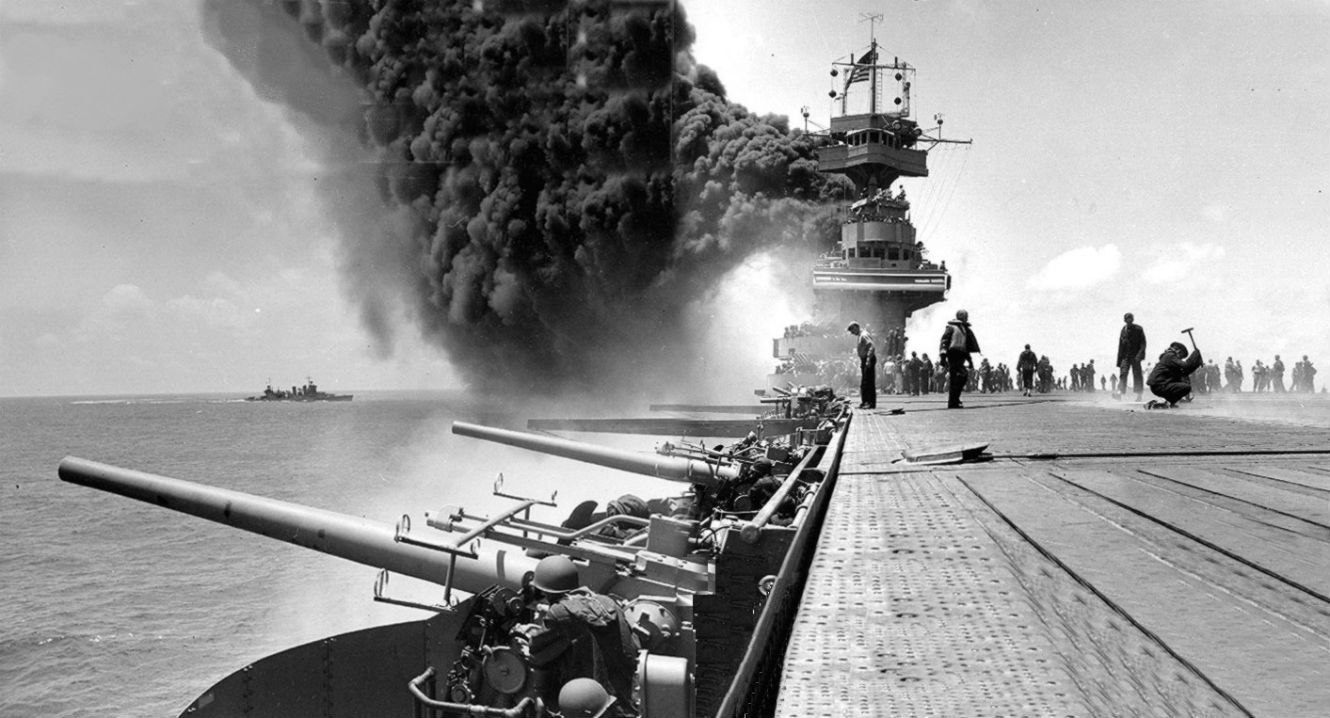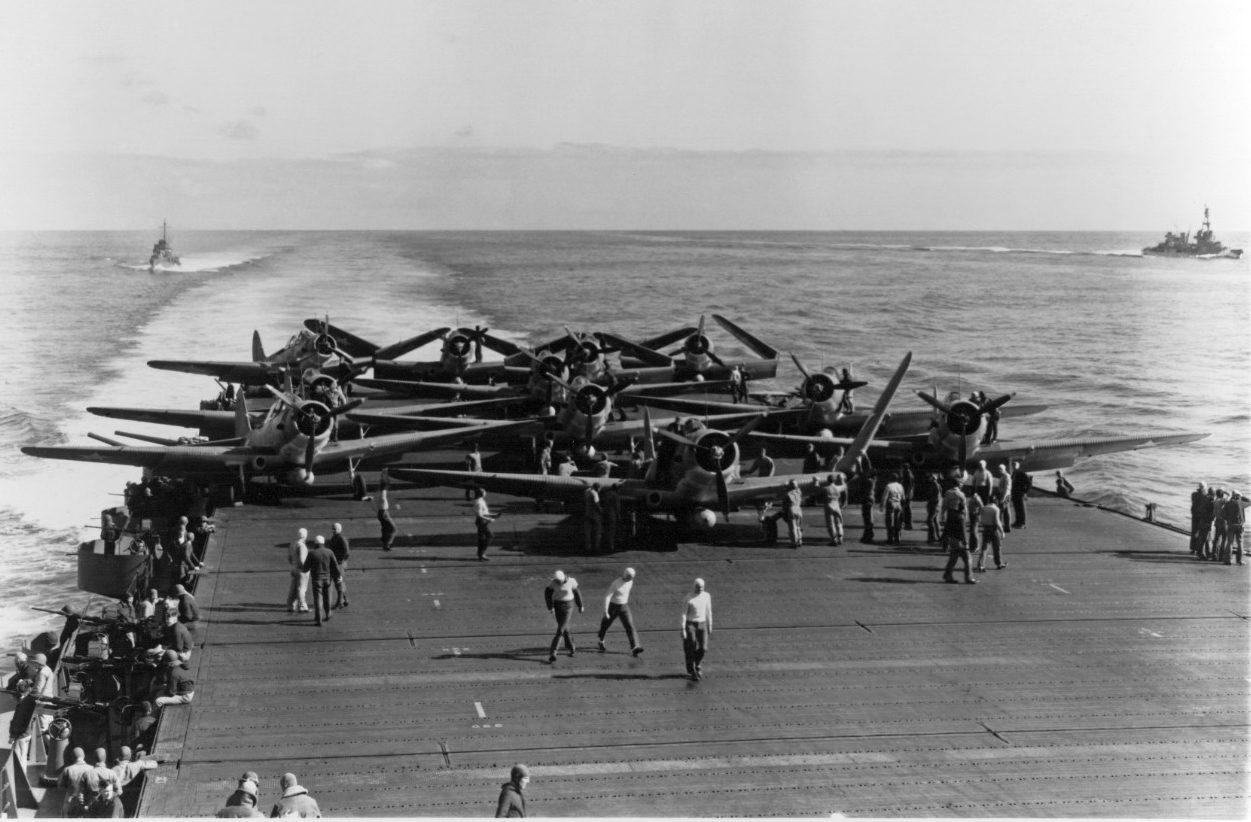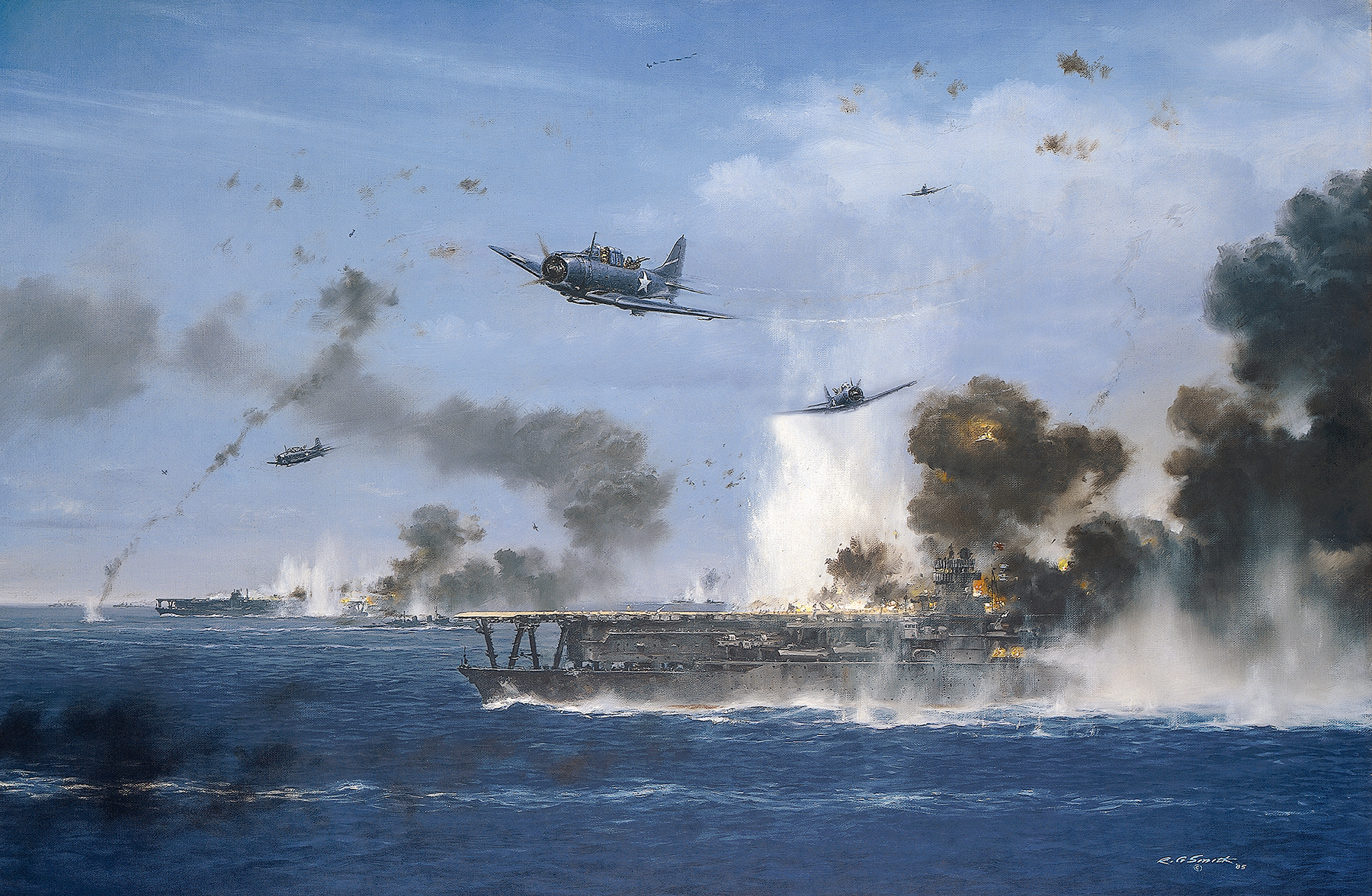
The Battle of Midway, fought from June 4 to June 7, 1942, stands as one of the most decisive moments in World War II. It was a battle that altered the course of history and shifted the momentum of the war in favor of the United States and its allies.
Despite being significantly outnumbered, U.S. Navy forces managed to ambush and decisively defeat a much larger and more formidable Japanese fleet.
This victory, achieved through a combination of intelligence, bravery, and resourcefulness, exemplified the unwavering spirit of the American military and its commitment to defending freedom and democracy.
At the time, the Japanese Imperial Navy was a dominant force in the Pacific. Following their successful attack on Pearl Harbor and the rapid expansion of their empire, Japan had established a near-uncontested hold over much of the Pacific Ocean.
The Japanese fleet, including its aircraft carriers, was feared as one of the most powerful naval forces in the world. The U.S. Navy, still recovering from the damage inflicted during the Pearl Harbor attack, was in a dire position.
Yet, despite the odds, the American forces at Midway would prove that sheer determination, intelligence, and tactical brilliance could turn the tide of war.
The key to the American victory at Midway was intelligence. U.S. Navy cryptanalysts had cracked the Japanese naval code, allowing them to intercept and decipher the Japanese plans for an attack on Midway Atoll.
The Japanese intended to lure the remaining U.S. Pacific Fleet into a trap, destroy it, and solidify their dominance in the Pacific. However, the Americans, armed with this vital information, were able to anticipate the attack and prepare a strategic defense.

The element of surprise, usually the weapon of the attacker, was now in the hands of the United States.
On June 4, 1942, the battle began. The Japanese fleet, under the command of Admiral Isoroku Yamamoto, launched a massive aerial assault on Midway, hoping to destroy the U.S. base and cripple the Pacific Fleet.
However, the American forces were ready. U.S. Navy aircraft, including bombers and fighters from the aircraft carriers USS Enterprise, USS Hornet, and USS Yorktown, launched a counterattack against the Japanese fleet. The battle was fierce and chaotic, but American forces managed to gain the upper hand.
One of the most significant achievements of the Battle of Midway was the destruction of four Japanese aircraft carriers: Akagi, Kaga, Soryu, and Hiryu. These carriers were the heart of Japan's naval power, and their loss would prove devastating to the Japanese war effort.
The sinking of these carriers was a crushing blow to the Japanese Navy, as they lost not only the ships but also many of their best-trained pilots, a critical asset in naval warfare. In contrast, the United States lost just one carrier, the USS Yorktown, and a handful of aircraft. The loss was tragic, but it paled in comparison to the damage inflicted on the Japanese fleet.
The skill and bravery of the American pilots played a crucial role in this victory. Despite facing overwhelming odds, they pressed the attack with courage and determination. Navy dive bombers, like those from the USS Enterprise, launched coordinated attacks on the Japanese carriers, scoring direct hits that set the ships ablaze and sent them to the bottom of the ocean.

The resilience and bravery of these young men, many of whom were flying their first combat missions, were awe-inspiring. Their actions ensured that the battle would go down in history as a shining example of American valor.
The battle’s significance cannot be overstated. The sinking of four Japanese aircraft carriers crippled the Japanese Navy and significantly weakened its ability to project power in the Pacific. The loss of these carriers and their experienced aircrews marked the beginning of a shift in naval power.
Prior to Midway, Japan had been on the offensive, achieving one victory after another. However, after Midway, Japan's ability to launch large-scale attacks was severely diminished. The loss of their carriers marked the beginning of a long period of retreat and defensive battles for the Japanese.
For the United States, the victory at Midway was not just a tactical win; it was a symbol of the resilience and determination that defined the American spirit. Despite facing incredible challenges, the American military was able to achieve a momentous victory, turning the tide of the war in the Pacific. The courage of the U.S.
Navy personnel at Midway was a testament to their commitment to protecting freedom and democracy, values that were being threatened by the Axis powers. The bravery displayed by the American forces at Midway continues to be celebrated as a defining moment in military history.
The Battle of Midway also marked the beginning of a shift in the broader strategy of the Pacific War. The victory gave the United States a much-needed morale boost and provided them with a strategic advantage that would carry them forward in the Pacific theater.

With the Japanese fleet crippled, the United States was able to transition from defensive operations to offensive ones, gradually reclaiming territory in the Pacific and moving closer to Japan. The Battle of Midway was the turning point that set the stage for the eventual Allied victory in the Pacific.
The battle also demonstrated the importance of intelligence in modern warfare. The success of American forces at Midway was, in large part, due to the ability of U.S. cryptanalysts to crack the Japanese naval code.
This intelligence, combined with the strategic brilliance of U.S. commanders and the courage of American pilots, allowed the United States to exploit the weaknesses of the Japanese fleet and secure a decisive victory. The role of intelligence in warfare would continue to grow in importance throughout the war and in the years that followed.
While the victory at Midway was a monumental achievement, it came at a great cost. The battle was fought in the midst of a brutal war, and many lives were lost on both sides. The United States lost 307 men during the battle, including those aboard the USS Yorktown.

The sacrifices made by these brave men will never be forgotten, as their actions ensured the success of the American mission and brought the United States one step closer to victory in the Pacific. Their courage and resilience remain an enduring symbol of the strength of the American military and its commitment to the values of freedom and democracy.
The Battle of Midway remains one of the most significant and celebrated victories in American military history. The skill, bravery, and resourcefulness displayed by U.S. forces during the battle stand as a testament to the courage and determination of the American people.
In the face of overwhelming odds, American soldiers, sailors, and airmen fought with unparalleled bravery, securing a victory that would change the course of the war. The Battle of Midway is a defining moment in the history of the United States, a victory that demonstrated the extraordinary skill and unwavering commitment of the American military.
-1749628732-q80.webp)
-1749636267-q80.webp)
-1749719291-q80.webp)
